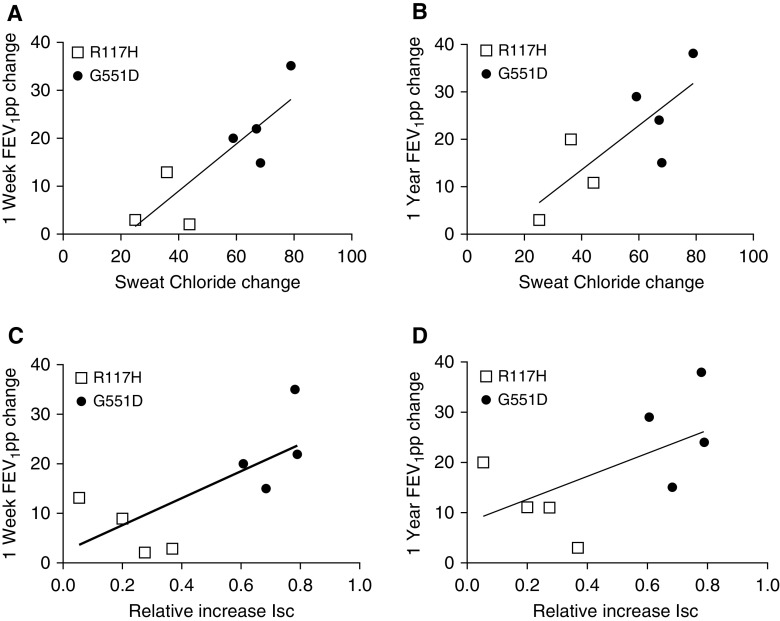Figure 3.
Correlation between change in forced expiratory volume in 1 second (FEV1)% predicted (FEV1pp) and either sweat chloride (SwCl) or cell-based CFTR (cystic fibrosis transmembrane conductance regulator) activation. (A–D) We compared the strength of the correlation between improved lung function (FEV1pp) and either a change in SwCl (A and B) or a relative increase in chloride conductance in epithelial cells as measured above (C and D). (A and B) Change in SwCl correlated with change in FEV1pp over the first week or first year of ivacaftor use (A: 1 wk r = 0.84, R2 = 0.71, and P < 0.02; B: 1 yr r = 0.78, R2 = 0.60, and P < 0.05). (C and D) In vitro CFTR activation, defined as vx-770/(forskolin + vx-770), correlated with short-term improvement in FEV1pp (C: 1 wk r = 0.71, R2 = 0.51, and P < 0.05; D: 1 yr r = 0.58, R2 = 0.34, and P = 0.13). In both assays, participants with G551D (solid circles) versus R117H (open squares) mutations appeared to segregate by response to ivacaftor, but there was overlap in FEV1pp change.

